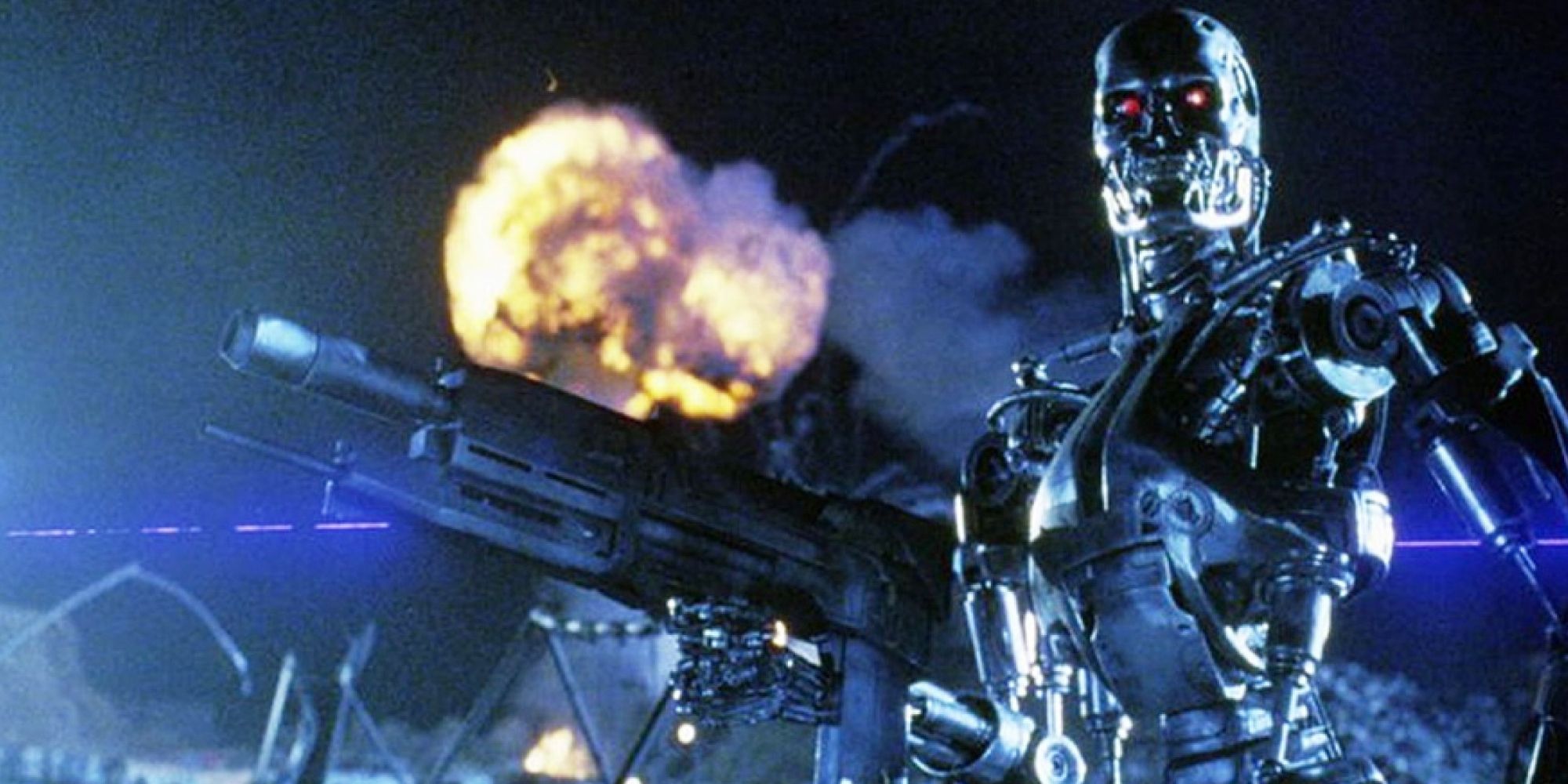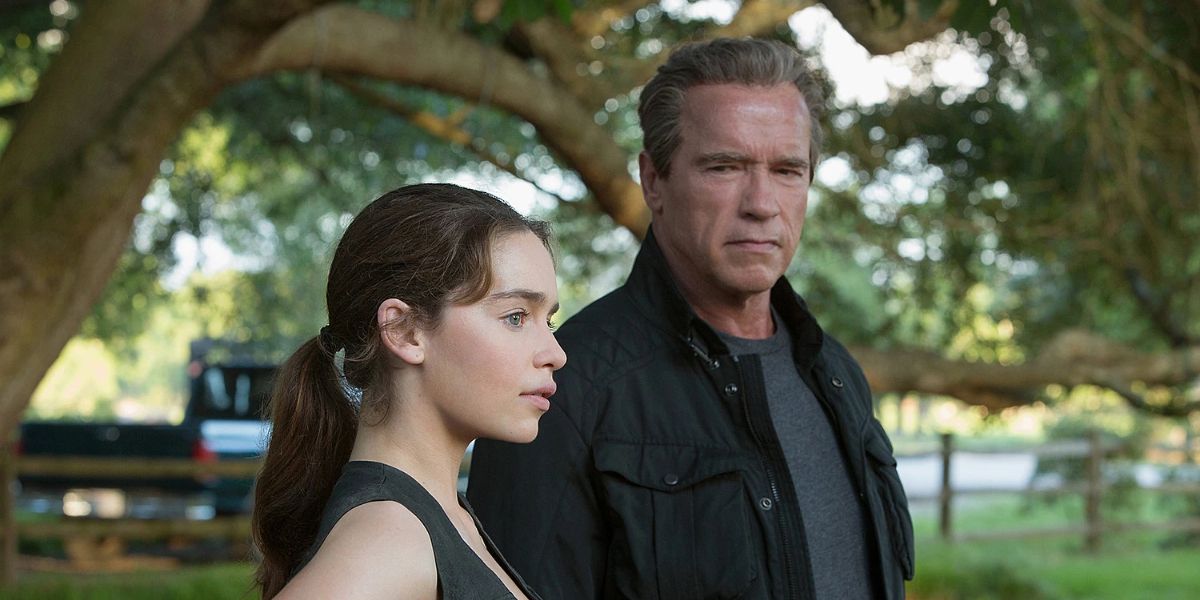Travel
How Does Time Travel Actually Work in the Terminator Universe?

When James Cameron wowed audiences with the original 1984 sci-fi horror flick, The Terminator, it felt unlikely that there would ever be a direct sequel. Even when there was, with Terminator 2: Judgment Day, it flipped the script on the killer cyborg narrative and redefined action movies forever. But the time travel element has had some fans scratching their heads for years… It’s no secret that the Terminator franchise can sometimes be a bit confusing. Cyborgs from the future who come back to kill the future leader of the human Resistance will do that. With the latest anime series, Terminator Zero, out now on Netflix, the ending makes time travel feel even more convoluted, but is it really? Well, sort of, but it also depends on which installment you’re watching.
The Original James Cameron Films Introduce the Mechanics of ‘The Terminator’s Time Travel
The truth is, the original Terminator doesn’t give us too much information about time travel at all. We know that nothing “dead” will go through, as Kyle Reese (Michael Biehn) explains, and that there’s no direct way back to the future (at least not without any Time Displacement Equipment). Cameron’s first venture into the Terminator universe is incredibly simple, and that’s why it still works so well after all these years. In sending the Arnold Schwarzenegger-looking T-800 into the past to kill Sarah Connor (Linda Hamilton), all so that John Connor will never be born, that narrative implies that at least Skynet believes it’s possible to change the future, possibly in real-time. Of course, the film also begs the question: was Kyle Reese paradoxically always John’s father? Or, maybe a better question is, did he actively change the past by creating a new John Connor with Sarah? Frankly, we don’t really know.
Terminator 2: Judgment Day continues these threads by introducing a new T-800 and the T-1000 (Robert Patrick). As these opposing Terminators are sent to either protect the young John Connor (Edward Furlong) or kill him, it’s clear that the entire premise of Terminator revolves around the concept that the future can in fact be changed, that there truly is “no fate but what we make for ourselves.” Does that mean that changing the past then overlaps with the future, rewriting reality? T2 implies that to be so. This is why Cameron filmed an alternate ending in which an older Sarah enjoys the future she helped create by destroying Skynet in the past. On the other hand, the mystery of time travel is likely part of the reason that the film officially ends instead with John and Sarah on the open road, with their fate up to us to determine.
Much like how it’s explained in Avengers: Endgame, time travel in the Terminator universe doesn’t mean the time one traveled back from didn’t happen. Rather, it means that even though Kyle Reese came from a dark future, the successful attempt to destroy all of Cyberdyne’s research in T2 might have actually annihilated that future entirely, replacing it with a new one. This doesn’t mean that Kyle no longer exists (had he lived beyond The Terminator, that is), but just that the events of time can change. However, it doesn’t work like Back to the Future where his existence is in question because of changing the events of the past. Rather, his past still exists in his memory, but the future is no longer where the timeline is headed. At least, that’s what we might hope.
‘Terminator: The Sarah Connor Chronicles’ Introduces Multiple Alternate Timelines
It’s the simplicity of James Cameron’s initial take on Terminator that kept fans coming back to the franchise for more (aside from T2-3D: Battle Across Time, that is, which messed with his time travel rules completely). Whether it was the film sequels, television shows, books, comics, or video games, it seemed like there were an infinite number of potential timelines to choose from. So, when Terminator: The Sarah Connor Chronicles premiered on Fox in 2007, it was no wonder that the show changed the entire dynamic going forward. Rather than dealing in one timeline, The Sarah Connor Chronicles tackles several. After Derek Reese (Brian Austin Greene) kills one of the inventors of Skynet in the past, he creates an active new future from which Jesse Flores (Stephanie Jacobsen) comes back from. At first, he thinks she’s his Jesse, only to realize that her timeline is different from his. The way TSCC seems to frame it, multiple futures may exist at one time, with characters like the Terminator Cameron (Summer Glau) and the T-1001 Catherine Weaver (Shirley Manson) coming back from different points in differing timelines to fight for their own survival.
Because of all the Resistance fighters and Terminators who have traveled back to the past, it’s impossible to know what future is currently heading our character’s way — and that’s part of the show’s thrill. Likewise, in the impromptu series finale, “Born to Run,” Thomas Dekker‘s John Connor ventures forward in time to the future, where he discovers that nobody knows who John Connor even is. In this way, The Sarah Connor Chronicles reinforces the notion first presented by James Cameron’s films, that changing the past will have a direct impact on the future, thus dissolving any other “active” timeline. By skipping over Judgment Day and not being there to help lead the Resistance, John no longer existed during the beginnings of the Future War. This inadvertently changes his own fate at the end of the show, that is, unless he travels to another alternate timeline instead of his current future. If only we could change the timeline ourselves to prevent Fox from canceling this show so we could find out…
Post-Cameron ‘Terminator’ Sequels Were a Bit More Cynical About the Future
You’ve probably noticed that we skipped over Terminator 3: Rise of the Machines as well as Terminator Salvation. Of course, Salvation didn’t come out until after TSCC had already been canceled, and since it takes place almost entirely in the future, there is no time traveling to note. As for T3, well, it does sort of the opposite of what all these other installments opted to do. Instead of proposing that our heroes could fight the future, Rise of the Machines claims that Judgment Day is inevitable. The date could change, but the Future War will still occur. Fate exists after all. Indeed, the film ends with Skynet launching the world’s nuclear arsenal, and because the program had been allowed more time to develop, it weaved its way into cyberspace, making it harder to destroy. It’s an interesting concept, but none of the time travel really does much but reinforce the idea that fate exists. Yes, Skynet sends the T-X (Kristanna Loken) back to kill John’s (Nick Stahl) lieutenants, but the overall future isn’t prevented.
Where the franchise takes another interesting turn is with the first official reboot, Terminator Genisys. Now, the events of the other Terminator films still happen, but just in alternate timelines. In this timeline, Kyle Reese’s (Jai Courtney) journey to the past is corrupted by Skynet (Matt Smith), who sends a Terminator-infected John Connor (Jason Clarke) back in time to ensure its own existence. More than that, another mysterious Resistance faction sends a T-800 back to save a young Sarah Connor (Emilia Clarke), only to raise her as his own daughter. This movie is rife with time travel, and while there’s a lot of traveling back to the past or forward to the future, one interesting development is that Kyle is able to remember changes to his own past as seen when he remembers these shifts through the eyes of his younger self. Again, this means that time itself is fluid, able to always be adjusted or changed. Unfortunately, the planned Genisys trilogy was canceled, so there’s never any real resolution.
When James Cameron returned as a producer for Tim Miller‘s Terminator: Dark Fate, some of the convoluted time travel mechanics introduced in The Sarah Connor Chronicles were done away with. Dark Fate goes back to the simplicity of time travel, with T2 having stopped Judgment Day from happening and Skynet from being born. Unfortunately, Skynet had still sent multiple Terminators into the timeline, and one of them manages to kill John despite time having been rewritten. This reinforces the idea that, although the future can change, it still remains the past for the time traveler. Of course, like Rise of the Machines before it, Dark Fate cynically promotes the notion that Judgment Day still has to happen in some form or another, this time a new A.I. called Legion.
‘Terminator Zero’ Makes Time Travel Even More Cyclical Than Before
The recent anime series Terminator Zero makes time travel seem complicated again, but it’s less so than you might think. Here, Malcolm Lee (André Holland/Yuuya Uchida) is said to have traveled back from the Future War to the past with his cyborg companion Misaki (Sumalee Montano/Saori Hayami). The pair then invent Kokoro (Rosario Dawson/Atsumi Tanezaki), a new artificial intelligence capable of stopping Skynet from enacting Judgment Day. While fans of The Terminator theorized that another version of Kyle Reese had gone back in time before, thus creating a paradox, Zero takes that notion to another level. You see, the Resistance fighter Eiko (Sonoya Mizuno/Toa Yukinari) is actually Malcolm’s mother, though she doesn’t know it at first. When communing with the future Prophet (Ann Dowd/Mari Yokoo), who is seemingly an elderly Eiko, she learns that every time someone goes back in time, they go to a different past that isn’t their own.
Unlike Kyle Reese’s journey back to the past of his time in an attempt to prevent the future from being rewritten, Zero creates more branched realities rather than replacing them. This means that even if Eiko changes the past, saves Malcom and his children, and allows Kokoro to go online, thus stopping the Terminator’s (Timothy Olyphant/Yasuhiro Mamiya) goal, she’s not actually saving her own reality — she’s creating a new one independent of when she came from. This is different from replacing the timeline, which effectively erases the Future War entirely. Instead, Eiko’s world, her friends, and everything she’s fought for, still exists in a timeline she can’t get back to. To make it more complicated, it means that the Prophet, if she is indeed Eiko, is from another time herself. Talk about a mind-bender.
While not every Terminator installment explains time travel in this way, it’s interesting to note that, depending on the creatives involved, the time travel mechanics of this franchise can seemingly change. To be fair, none of the other Terminator films have really spent much time trying to explain time travel, and have left much of its interpretation up to the audience. Terminator Zero takes a bold step forward in establishing (at least, theoretically) that this is how time travel works. James Cameron might’ve crafted a simple time travel story back in the ’80s, but future installments have forever complicated the past. Hopefully, the filmmaker’s next Terminator adventure will shed more light on this.
Terminator Zero is available to stream on Netflix in the U.S.





.jpg)




